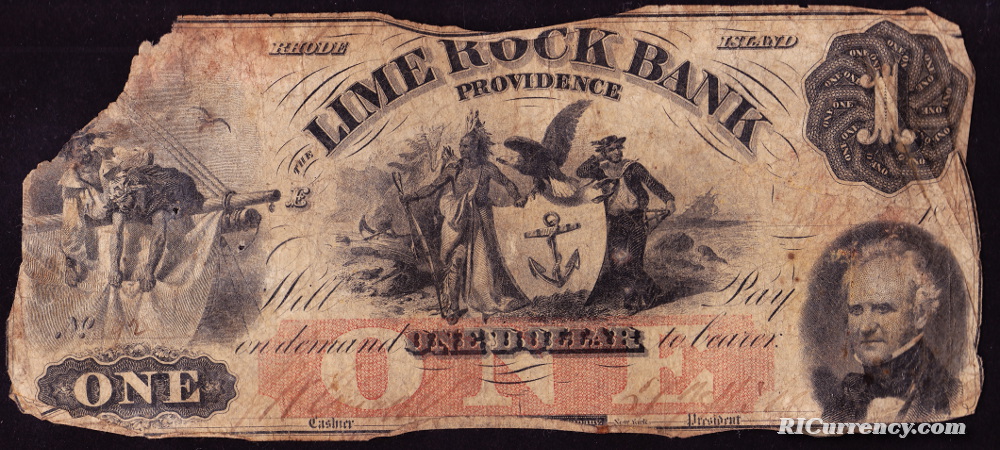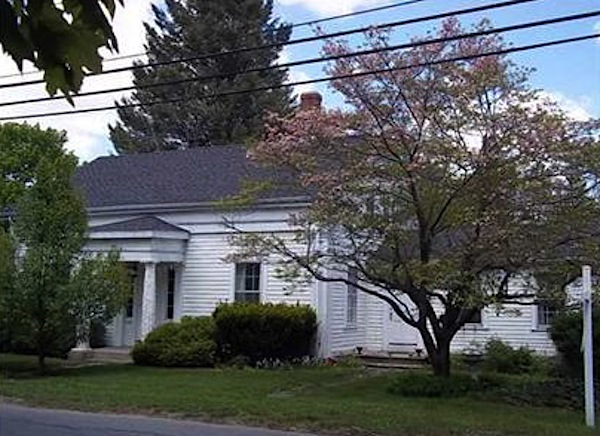Smithfield Lime Rock Bank
While the textile industry was blossoming all across northern Rhode Island, one village made a name for itself for its natural resources. This was Lime Rock in Smithfield. At its founding in 1823, the Smithfield Lime Rock Bank was closely associated with the native industry, and the Harris Lime Rock Company in particular.
In 1871, the section of Smithfield containing Lime Rock was broken off into its own town and named Lincoln, in honor of the recently assassinated president, Abraham Lincoln.
The bank relocated to Providence in 1847:
“It was then domiciled at 25 Westminster street and had a capital of $100,000. The presidents from that time have been: George Olney, Josiah Seagrave and, from 1855 tp the present time, Thomas J. Hill. A. W. Spencer was cashier until 1855, when he was succeeded by John W. Angell, the present cashier. It was reorganized as the Lime Rock National Bank June 30th, 1865. Its capital was raised to $250,000 about 1852, and in 1882 that amount was doubled, the present capital being $500,000. Its location was changed about 1852 to 8 What Cheer Building; 1857 to 42 Weybosset; 1867 to 56 Weybosset; 1875 to 41 Westminster, its present location. The directors are Thomas J. Hill, James S. Phettteplace, John W. Angell, Lyman Pierce, Fred B. Evans, James C. Goff and John D. Lewis.” — Richard M. Bayles, ed. History of Providence County, Rhode Island, Volume I. New York: W. W. Preston, 1891.
In addition to the obsolete notes below, this bank issued $859,060 in national banknotes in denominations of $1, $2, $5, $10 and $20. Only one lonely example of this bank’s post-1865 currency is known to exist today, a $10 from 1875.
The Lime Rock National Bank ran into financial troubles and voted to go into liquidation in a meeting held on November 27, 1894. It had been closely connected with the Merchants Savings Bank and due to that association, came to hold Western mortgages, which was illegal.
The bank’s first home at 1089 Great Road in Lincoln is listed on the National Register of Historic Places.







Built in 1835, this structure at 1089 Great Road, Lincoln, was the home of the Smithfield Lime Rock Bank. When it moved to Providence, this building became a private home.
